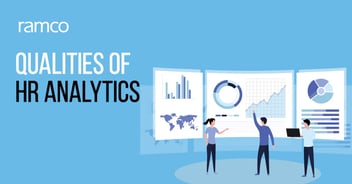
With Part1 and Part2 covering the factors pushing BI and the way it is being used by the companies, Part3 will throw light on the benefits of deploying BI and how will it evolve in the year of 2013.
Advantages/ Benefits of deploying BI & Analytics
Key benefits of BI:
- Get faster answers to your business questions
- Eliminate guesswork
- Get key business metrics reports when and where you need them
- Optimize resource utilization and cut costs
- Get insight into customer behavior: One of the greatest benefits of business intelligence software is that it allows companies to gain visibility into what customers are buying (or not), giving them "the ability to turn this knowledge into additional profit" and retain valuable customers.
- Identify cross-selling and up-selling opportunities: Business intelligence software allows firms to leverage customer data to build, refine and modify predictive models that helps sales representatives to up-sell and cross-sell products at appropriate customer touch points.
- Learn how to streamline operations
- Improve efficiency: Single view reporting of Enterprise-wide data
- Helps management get a complete view of the organizational health with graphical representation depicting patterns to see what is happening, understand areas that need immediate assessment, and finally know what is most likely to happen
- Action ready served on the Manager’s desktop
- Flexibility to evolve the Analytics to adapt to the changing business scenarios and growth
- Enables businesses to focus on their core line of business and not on technology- Ramco BI reduces the reliance & resource cost of IT and helps decision makers in focusing on core business thereby increasing ROI
- Possibility to test out business strategy hypotheses by simulating scenarios
BI evolving in the year of 2013
2013 will prove another record year for investment in BI solutions, as organizations and CIOs feel the pressure to harness their data assets and the abilities of new-age BI products in increasingly sophisticated ways. That and the less reasoned pressure of anxiety: Get onboard or get left behind.
Predictions for the hottest BI trends are:
- Self Service BI: It means business users have access to the right kind of data, the data is in a place and format that they can use, and they have the solutions that enable self-service analytics. For this, the users need an easy-to-use interfaces, programming-free BI app creation, the ability to search, write-back and drill-down, and data exploration capabilities. The demand will increase for modern ad-hoc tools that allow users to directly tap the corporate data warehouse and provide a high degree of flexibility to slice-and-dice the data for insight on the fly. In-memory technology, advanced visualizations, and the broader emergence of HTML5 will support developers in creating multifaceted web-based apps that run on any device via a standard web browser and offer simple and intuitive self-service features that every type of user can enjoy.
- Mobile BI: There are two aspects of the mobile BI revolution: empowering employees to conduct a real-time analysis regardless of their physical location, and mining Smartphone and tablet (not every user prefers the same device) data to develop a more holistic understanding of the customer, the market, the workforce, etc. In the near future, IT departments will need to understand the best possible way to manage mobile application development to reduce the burden of creating many versions of each application – one for each device in use at the company. By the end of 2013, a real "all-in-one" solution should have entered the market.
- Collaboration: Real collaboration around patterns and trends in corporate data will be achieved in 2013 as companies implement social network functions such as commenting, tagging, rating, bookmarking and sharing of relevant content. The result is broader usage and better utilization of enterprise BI. As benefits like open communication, more nimble decisions, and competitive advantages are realized, the corporate BI app store will potentially be just around the corner.
- Predictive Analytics: It is hot, and will only get hotter in the coming year. There are a variety of enterprise functions benefitting from the technology, including sales and marketing. In 2013, we can expect more companies mining their multichannel marketing data to remain competitive and better predict who their customers are, the products or services that they want, their online and offline actions, and what they need to continue being customer.
- Embedded BI: To harness the trends and benefits of BI without investing in significant new infrastructure, more and more organizations are embedding BI capabilities into their existing SaaS solutions. Buying BI capabilities rather than building the technology in-house gives companies a lower total cost of ownership and quicker time to value.
- Cloud BI: In 2013 we can expect to see the maturation of cloud BI, so that people can collaborate with data in the cloud, just like they collaborate on their Salesforce CRM or help desk data.
- Big data gets bigger and bigger: The rise in volume (amount of data), velocity (speed of data) and variety (range of data) gives way to new architectures that no longer only collect and store but actually use the data. The challenge however is that big data, as opposed to its name, is really many amounts of small data ranging from tweets, sales reports to mail messages. Therefore performance is the key word. Look for technology solutions like data warehouse appliances, in memory analytics, columnar storage and smart software solutions.
- Google fast, Apple easy: Just like at home, business users are expecting an engine that searches all available data (structured and unstructured, internal and external) to quickly find answers. Navigating through the results to find patterns, trends could be improved with advanced visualizations. The result is a Consumerization of enterprise BI. The corporate BI App Store is (virtually) just around the corner.
- In-memory computing coming up: Demand for real-time insights, shrinking business timeliness and an increasingly competitive global marketplace is placing increasing pressure on acceptable query speeds. As such, in-memory capabilities will grow in importance as organizations demand answers to critical business questions at Google-like speed.
As per Gartner, three central predictions for the BI market are:
- Every major BI platform vendor will present a cloud offering. Current adoption of “cloud BI” by user organizations lags far behind the expectations of vendors, which are busy creating and marketing new off-premises solutions.
- BI initiatives will be based on an organizational model that strikes a balance between centralized and decentralized delivery.
- The foremost BI challenge is to align initiatives with corporate strategy and objectives, but less than one-third of organizations have a documented analytics, BI, or performance management strategy. Organizations often develop and deploy hindsight-oriented reports or query applications focusing on metrics that users may find interesting, but they don’t represent the operational or strategic controls used to facilitate business performance.
Blog by : Ms. Jasneet Bagga, Senior Business Analyst , Ramco Systems

